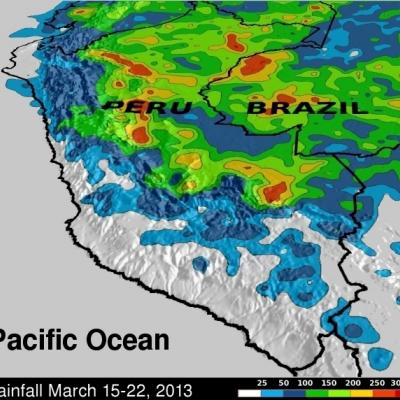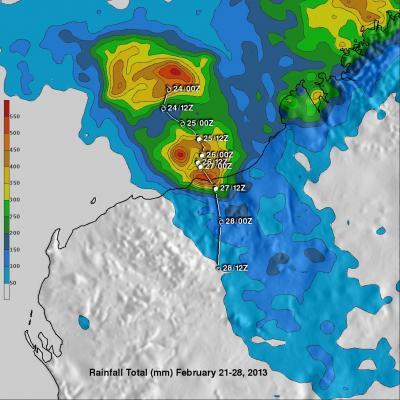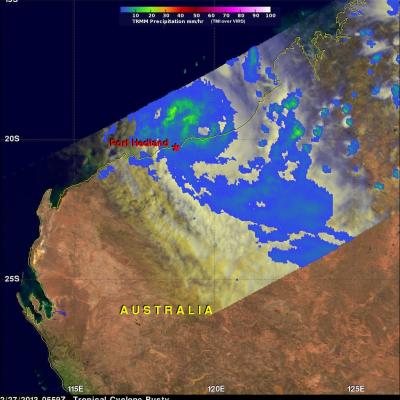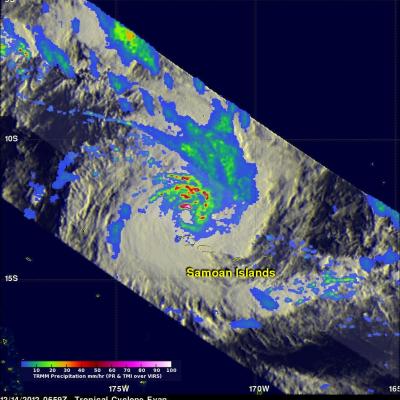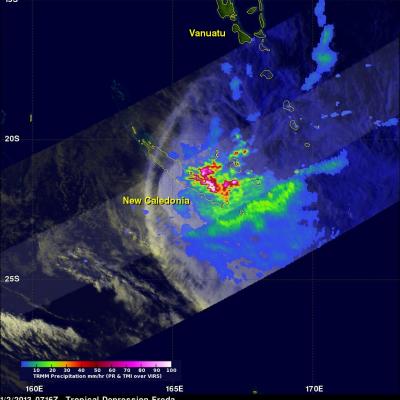Flooding in Eastern Peru, Dry in the West
Hundreds of people in central Peru were recently flooded out of their homes. Rivers left their banks washing away buildings and highways while areas of Peru along the coast of the Pacific Ocean were relatively dry. Flooding from heavy rainfall in some areas of Peru was occurring at the end of the normal rainy season. Data from the TRMM satellite are used to calibrate rainfall data merged from various satellite sources. TRMM-based, near-real time Multi-satellite Precipitation Analyses (TMPA) at the NASA Goddard Space Flight Center are used to monitor rainfall over the global Tropics. TMPA


